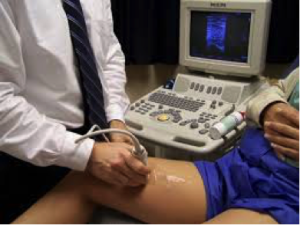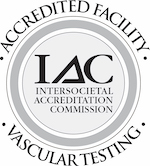Vascular Duplex Ultrasound

A vascular duplex ultrasound is a simple office test to show how blood flows to many parts of the body. It can also tell the width of a blood vessel and reveal any blockages. It combines traditional ultrasound with Doppler ultrasound. Traditional ultrasound uses sound waves that bounce off blood vessels to create pictures. Doppler ultrasound records sound waves reflecting off moving objects, such as blood, to measure their speed and other aspects of how they flow.
There are different types of ultrasound exams performed at The Huntington Heart Center like Carotid, Renal and Extremities.
A duplex ultrasound can help diagnose the following conditions:
- Arterial occlusion
- Blood clot
- Carotid occlusive disease
- Renal vascular disease
- Varicose veins
- Venous insufficiency
What to Expect During a Duplex Ultrasound?
There is no preparation for a duplex ultrasound. You may need to wear a medical gown and will be lying face-up on the exam table for the test. The ultrasound technician will spread a gel over the area being tested. The gel helps to conduct the sound waves through your tissues. A wand, called a transducer, is positioned over the area being examined. This wand sends out the sound waves and a computer measures how the sound waves reflect back and translates the sound waves into pictures. The Doppler creates a “swishing” sound, which is the sound of your blood moving through the arteries and veins. You need only to stay still during the exam. Most duplex ultrasound scans take 15-20 minutes.
Are There any Risks to a Duplex Ultrasound?
There are virtually no risks to a duplex ultrasound. It is both a noninvasive procedure and one that requires no radiation. You may experience some discomfort to the extent that the wand has to pass over an area of potential tenderness due to varicose veins or venous insufficiency.
Results and Next Steps
The images from your duplex ultrasound will be reviewed and interpreted by a radiologist and your vein specialist. Based on these results, a treatment plan for your particular circumstance will be developed and implemented. Over the course of time, follow-up duplex ultrasounds may be required to judge the progress and evaluate the results of treatment.







